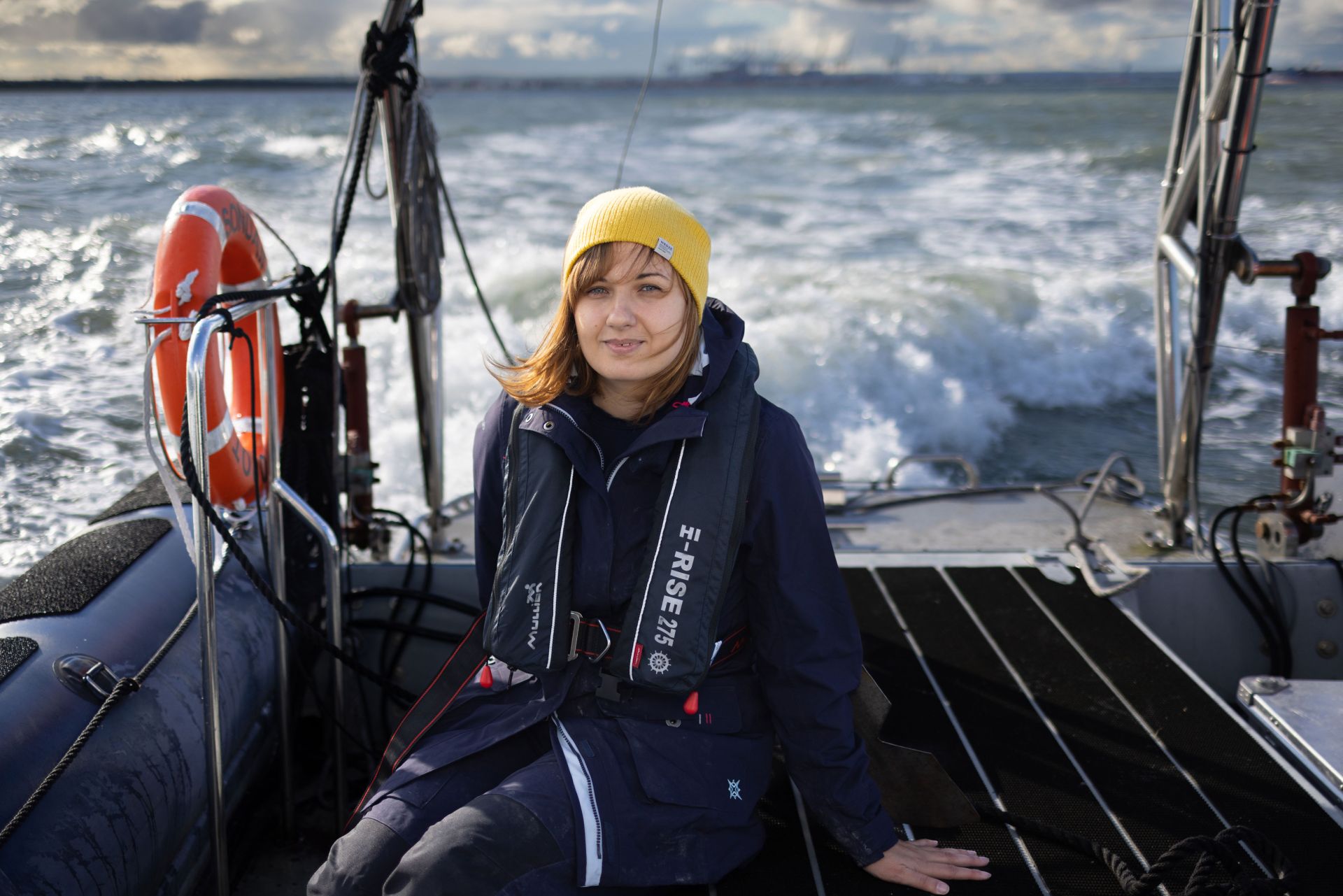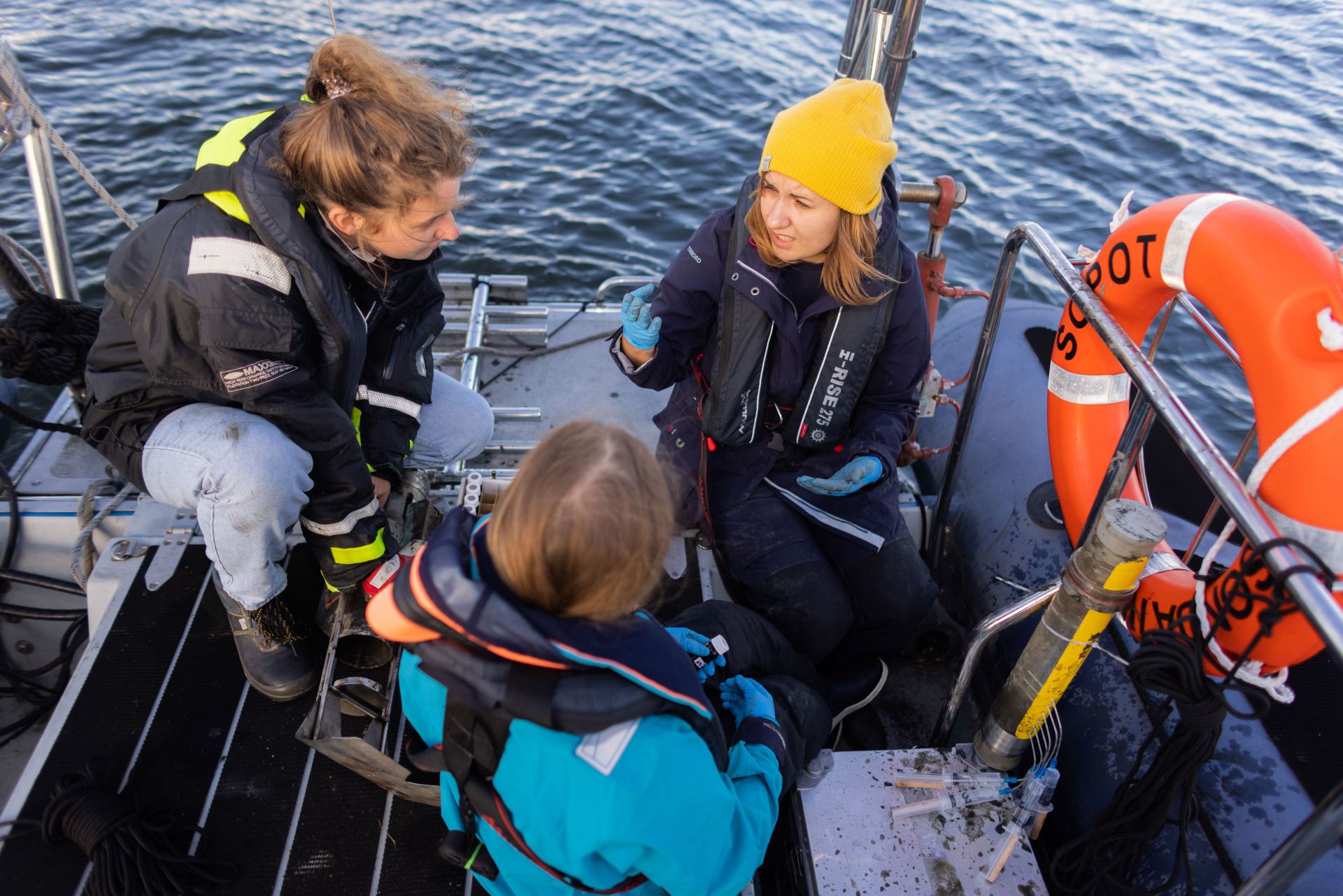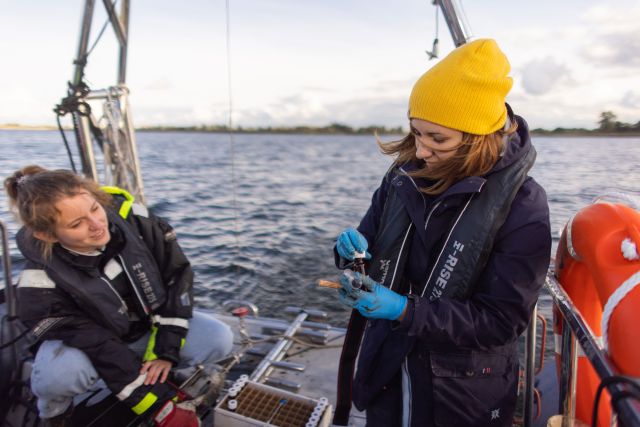Principal Investigator
:
Dr Alexandra Loginova
Institute of Oceanology of Polish Academy of Sciences
Panel: ST10
Funding scheme
: POLS
announced on
16 march 2020
Classically, dissolved organic matter (DOM) in sediment pore waters was assumed to be not available for microbial communities to consume. This assumption was based on the fact that DOM is accumulating with sediment depth, and the consumption rates within the sediments should be smaller than production rates of DOM. However, recently it was suggested that sediment pore waters might potentially serve a source of bioavailable DOM to the overlying near bottom water layer and water column. It was also hypothesized that DOM supplied by sediments might stimulate microbial activity in the near-bottom waters.
 dr. Alexandra Loginova, fot. M. Łepecki
dr. Alexandra Loginova, fot. M. Łepecki
 dr. Alexandra Loginova, fot. Michał Łepecki
DOMUSe project is determined to characterize microbial response to dissolved organic matter (DOM) supplied from the sediments to the near-bottom water of Baltic Sea Deeps. In DOMUSe, we will execute several studies, where part of the sediment and near-bottom waters will be enclosed in the anoxic atmosphere for a period of time. This way, we would like to assess the rates of microbial processes occurring in the near-bottom waters. We have chosen several proxies that will allow us to trace changes in quality and quantity of DOM, including chemical composition and optical DOM properties. We will use optical properties of DOM to assess changes in DOM quality. Optical properties of DOM, such as fluorescence, via statistical multivariate analyses, will allow to assess the DOM fractionation between humic-like (microbially reworked and mainly refractory) DOM and amino acid-like DOM, which is mainly associated to rapidly utilizable fresh DOM. We will use siderophores, ferric iron specific small organic molecules, as a proxy of microbial activity. Siderophores are small chained organic molecules, which are produced by microbes to assess ferric iron. Their production rates were previously shown to be affected by bioavailability of dissolved organic matter. Their production was previously associated to fresh labile organic matter sources, such as phytoplankton blooms, however, they were also found in the sediment pore waters. The measurements of microbial nutrient utilization will fulfil the measurements of the microbial response to DOM release from sediments pore waters. Bacterial abundance will be also measured overtime to access bacterial number increase associated to DOM supply by the sediments. Therefore, the measurements of DOM optical properties in conjunction with siderophores accumulation, microbial abundance, and nutrient consumption will provide critical insights on the ability of sediment released DOM to serve as a substrate for heterotrophic communities to grow on and function.
dr. Alexandra Loginova, fot. Michał Łepecki
DOMUSe project is determined to characterize microbial response to dissolved organic matter (DOM) supplied from the sediments to the near-bottom water of Baltic Sea Deeps. In DOMUSe, we will execute several studies, where part of the sediment and near-bottom waters will be enclosed in the anoxic atmosphere for a period of time. This way, we would like to assess the rates of microbial processes occurring in the near-bottom waters. We have chosen several proxies that will allow us to trace changes in quality and quantity of DOM, including chemical composition and optical DOM properties. We will use optical properties of DOM to assess changes in DOM quality. Optical properties of DOM, such as fluorescence, via statistical multivariate analyses, will allow to assess the DOM fractionation between humic-like (microbially reworked and mainly refractory) DOM and amino acid-like DOM, which is mainly associated to rapidly utilizable fresh DOM. We will use siderophores, ferric iron specific small organic molecules, as a proxy of microbial activity. Siderophores are small chained organic molecules, which are produced by microbes to assess ferric iron. Their production rates were previously shown to be affected by bioavailability of dissolved organic matter. Their production was previously associated to fresh labile organic matter sources, such as phytoplankton blooms, however, they were also found in the sediment pore waters. The measurements of microbial nutrient utilization will fulfil the measurements of the microbial response to DOM release from sediments pore waters. Bacterial abundance will be also measured overtime to access bacterial number increase associated to DOM supply by the sediments. Therefore, the measurements of DOM optical properties in conjunction with siderophores accumulation, microbial abundance, and nutrient consumption will provide critical insights on the ability of sediment released DOM to serve as a substrate for heterotrophic communities to grow on and function.
Project title: Microbial Dissolved Organic Matter utilisation at the near-sediment waters in the Baltic Sea Deeps
Dr Alexandra Loginova
Dr. Alexandra Loginova is a young scientist and a working mom. She is currently a postdoctoral researcher at the Institute of Oceanology of the Polish Academy of Sciences and a leader of the research project funded by the Norway grants. Dr. Loginova has finished her Ph.D. in the field of Biological Oceanography at Helmholtz Centre for Ocean Research Kiel in Germany in 2016. Her research focuses on dissolved organic matter cycling in areas that are affected by low oxygen conditions.


